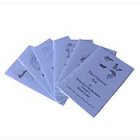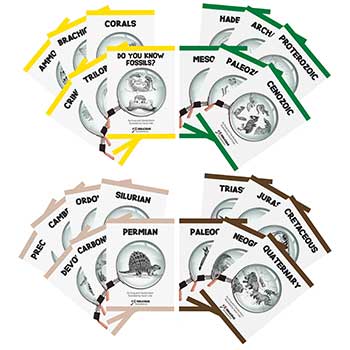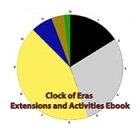Sign up for Lesson Plans, discounts & more!
Earth Science Lesson Plans On Geologic Time
An Overview of the Clock of Eras Lesson Plans
The earth science lesson plans on geologic time is an overview to the series of lessons called the Clock of Eras. The Clock of Eras is a simple graphic tool for visualizing geologic time. But it can be so much more than that.
It can be a springboard for teaching geologic time, the formation of the earth, evolution, and the wonder and beauty of life!
The Clock of Eras can be the foundation for an elementary earth science Program. There isn’t just one lesson plan for the clock of eras but a series of lessons. They are designed to introduce children to the concepts of geologic time, with its eras and periods, and to give a visual memory aid to the order and primary characteristics of each of them. Along the way many topics present themselves for further study. Creation, astronomy, planet formation, volcanology, chemistry, paleontology, geology, ecology, and biology are some of the major themes introduced with the clock. How much time is allotted to each of these depends upon your focus and your class time.
The following is an outline of the main presentations that
accompany the clock. The outline has links that will take you to the
individual lessons. Each lesson includes a story to tell the children,
any prerequisite work, follow up work and extensions. The order of
presentation is important. This is an unfolding story. Think of it as
chapters in a book.
This is the order of presentation for the earth science lesson plans on geologic time.
- Introducing the Clock of Eras
- The Hadean Time
- The Archaean Time
- The Proterozoic Era
- The Paleozoic Era
- The Mesozoic Era
- The Cenozoic Era
For more
earth science lesson plans on geologic time
Check out some of the Educational Materials for sale on our sister site fossilicious.com.

interested in more? If so, you may want to check out our other sites:
fossilicious.com - Our online fossil and mineral rock shop.
rocksandminerals4u.com - An educational site about rocks, minerals, and geology.
Geologic Time Geologic Time Line
Cenozoic Era
Quaternary
Neogene
Paleogene
Mesozoic Era
Cretaceous
Jurassic
Triassic
Paleozoic Era
Permian
Carboniferous
Devonian
Silurian
Ordovician
Cambrian
Archean Time
Hadean Time
Teachers Resources
Activities for Education and Fun
Earth Science Lesson Plans
Activities For Kids
Fossil Lesson Plans
Fossil Activities
Education Articles
Coloring Pages
Dinosaur Coloring Pages
Montessori Materials
Geology Club
Fossil Hunting
 |
 |
 |




